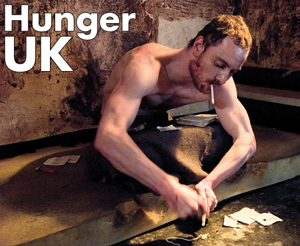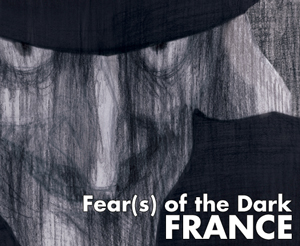CIFF: Hunger, Fear(s) of the Dark
By Rob Christopher in Arts & Entertainment on Oct 20, 2008 4:00PM
 This is part of Chicagoist's coverage of the Chicago International Film Festival.
This is part of Chicagoist's coverage of the Chicago International Film Festival.
Hunger (screens 10/21)
Bobby Sands was a member of the IRA serving time in Northern Ireland's infamous Maze prision when, in 1981, he went on a hunger strike, protesting the fact that IRA members were classified as criminals and not political prisoners. He lasted for 66 days before starving to death. Hunger details his ordeal, and that of the other IRA prisoners held in the Maze and frequently brutalized by prison guards. Hunger is a masterpiece, and we don't use that word lightly. It's also one of the most painful, gut-wrenching movies we've ever watched. Our friend described it perfectly as a Francis Bacon painting come to life. Director Steve McQueen reduces the story to basic elements. Bruises. Blood. Head wounds. Maggots. Bedsores. Shit. Piss. He pushes us to examine the very edges of what it means to be human. It is not for the squeamish. And yet one of the most extraordinary stretches of the movie is a straightforward dialog scene between Sands and a priest, each trying to convice the other of his own rightness. It's a single shot which lasts at least ten minutes. The camera doesn't even move. But the tug-of-war drama between the two men packs in more action than entire movies. Sands' final epiphany at the movie's end is heart-rending. Without words, we're able to share his last moment.
 Fear(s) of the Dark (screens 10/27)
Fear(s) of the Dark (screens 10/27)
Ten graphic artists contributed segments to this animated horror anthology, using shades of black and white and gray. Themes range from vicious dogs and haunted houses to a bayou mystery and a Japanese ghost story. As in any episodic movie, the quality varies from moment to moment. But stylish pictorials and evocative sound design impressed us throughout. There are two standout segments. The first, a creepy human praying mantis tale by Charles Burns, visualizes a Cronenberg-esque story in a hard-edged wordcut style reminiscent of Chris Ware. The second is the haunted house tale, by Richard McGuire. Unfolding without any dialog, it uses the soundtrack and minimalist white lines against a black background to tell the story of a weary traveler who takes refuge in the wrong empty house. You'll definitely have the shivers by the time it reaches its conclusion.